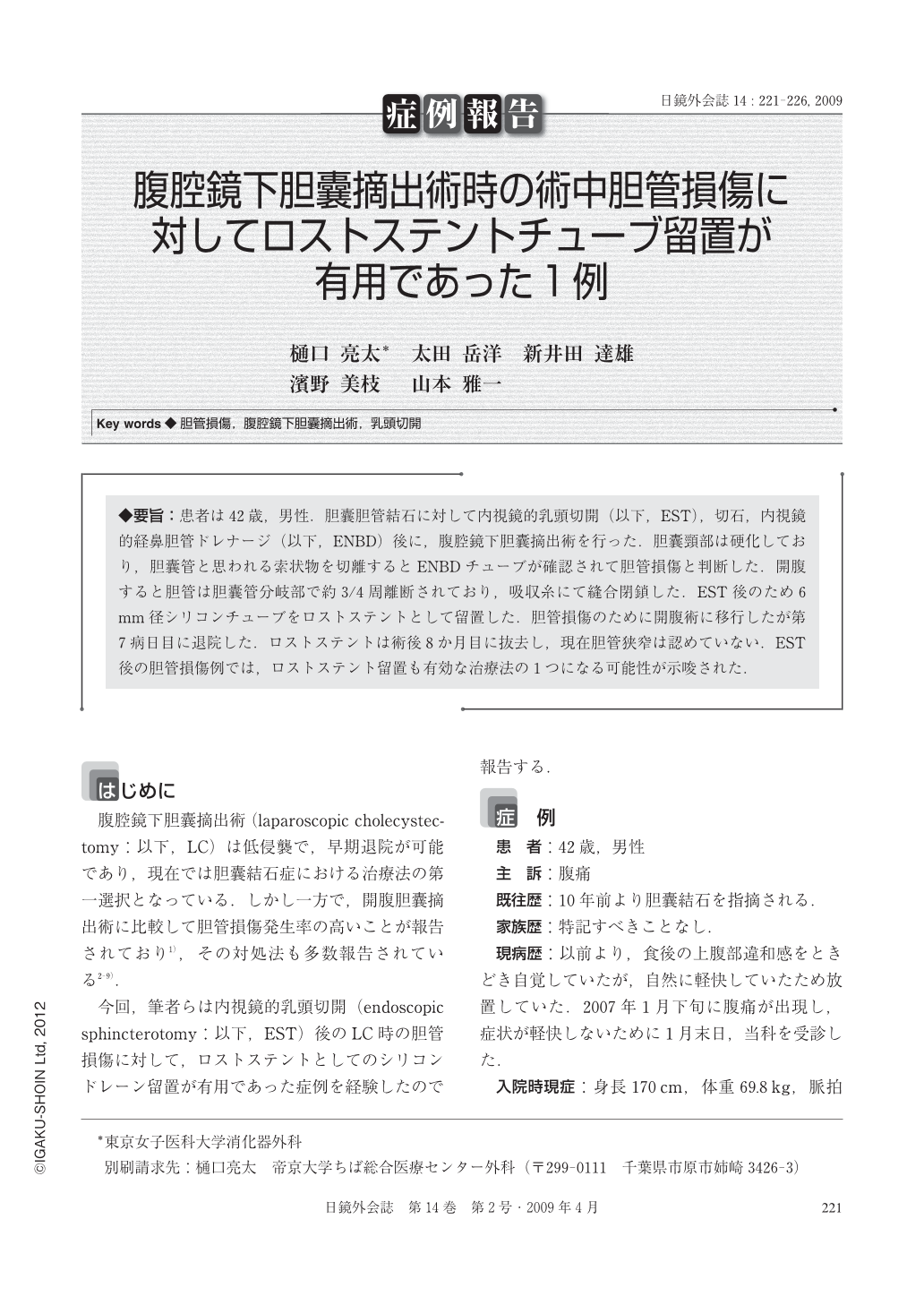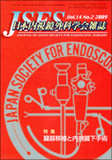Japanese
English
- 有料閲覧
- Abstract 文献概要
- 1ページ目 Look Inside
- 参考文献 Reference
◆要旨:患者は42歳,男性.胆囊胆管結石に対して内視鏡的乳頭切開(以下,EST),切石,内視鏡的経鼻胆管ドレナージ(以下,ENBD)後に,腹腔鏡下胆囊摘出術を行った.胆囊頸部は硬化しており,胆囊管と思われる索状物を切離するとENBDチューブが確認されて胆管損傷と判断した.開腹すると胆管は胆囊管分岐部で約3/4周離断されており,吸収糸にて縫合閉鎖した.EST後のため6mm径シリコンチューブをロストステントとして留置した.胆管損傷のために開腹術に移行したが第7病日目に退院した.ロストステントは術後8か月目に抜去し,現在胆管狭窄は認めていない.EST後の胆管損傷例では,ロストステント留置も有効な治療法の1つになる可能性が示唆された.
A 42-year-old man with cholecystocholedocholithiasis underwent endoscopic sphincterotomy(EST), lithotomy and endoscopic nasobiliary drainage(ENBD). After these treatments, laparoscopic cholecystectomy was performed. The area around the neck of the gallbladder was sclerotic due to inflammation. A cord which was considered to be a cystic duct was clipped. However, ENBD tube was confirmed inside the cord that was cut. Bile duct injury was confirmed. The bile duct was cut about 3/4 of the circumference at the level of bifurcation with the cystic duct. The injured portion of the bile duct was sutured with absorbable sutures. A 6-mm silicon drain was placed as a lost stent because the patient had undergone EST. The end of the silicon tube was placed into the duodenum through the papilla of Vater. Although the proceduer was switched to laparotomy due to bile duct injury, the patient was discharged on postoperative day 7. Eight months later the tube was removed by endoscopy, and no stricture of the bile duct has been observed. Placement of a silicon drain as a lost stent may be effective in patients with bile duct injury, sustained during LC after EST.

Copyright © 2009, JAPAN SOCIETY FOR ENDOSCOPIC SURGERY All rights reserved.


